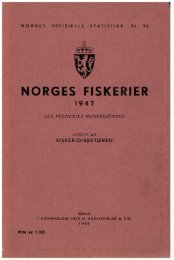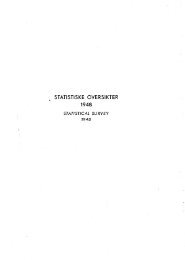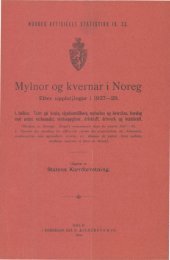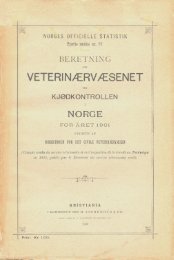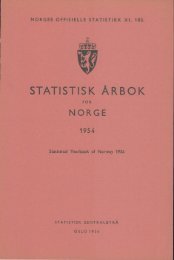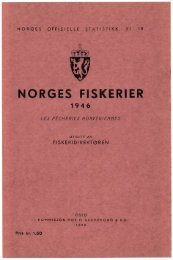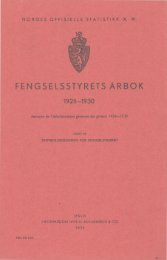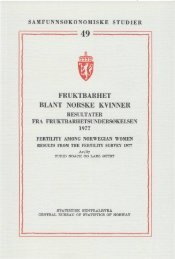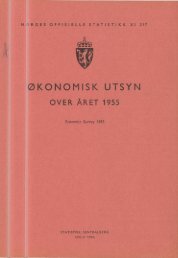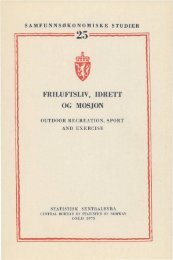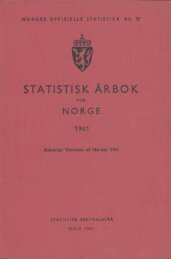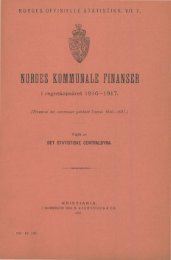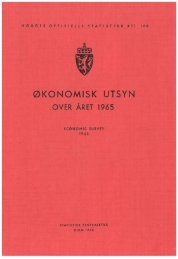Liquidity provision in the overnight foreign exchange market
Liquidity provision in the overnight foreign exchange market
Liquidity provision in the overnight foreign exchange market
Create successful ePaper yourself
Turn your PDF publications into a flip-book with our unique Google optimized e-Paper software.
horizon to 0.71% per SEK 10 billion at <strong>the</strong> 90-day horizon. These numbers are economically<br />
significant. For <strong>in</strong>stance, at <strong>the</strong> 30-day horizon <strong>the</strong> standard deviation of currency<br />
flows of F<strong>in</strong>ancial customers is 12 billion SEK. An <strong>in</strong>crease of one standard deviation<br />
<strong>in</strong> <strong>the</strong> net flow of F<strong>in</strong>ancial customers will <strong>the</strong>n, on average, imply an <strong>in</strong>crease <strong>in</strong> <strong>the</strong><br />
<strong>foreign</strong> <strong>exchange</strong> rate of 0.66%. For comparison, <strong>the</strong> standard deviation for changes <strong>in</strong><br />
<strong>the</strong> <strong>foreign</strong> <strong>exchange</strong> rate over <strong>the</strong> 30-day horizon is 2.33%.<br />
The coefficient for <strong>the</strong> error correction term is negative and significant for all horizons<br />
reported. At <strong>the</strong> five-day horizon, return to <strong>the</strong> long-run equilibrium takes place by<br />
5% <strong>in</strong> each period. For <strong>the</strong> 30-day and 90-day horizon, <strong>the</strong> adjustment to <strong>the</strong> long run<br />
equilibrium takes place by 21% and 49% <strong>in</strong> each period, respectively.<br />
The coefficient for changes <strong>in</strong> <strong>the</strong> ten-year <strong>in</strong>terest rate differential is positive and<br />
significant for all time horizons. An <strong>in</strong>crease <strong>in</strong> <strong>the</strong> ten-year <strong>in</strong>terest rate differential may<br />
signal expectations of higher <strong>in</strong>flation <strong>in</strong> Sweden relative to Germany and <strong>the</strong> o<strong>the</strong>r eurocountries.<br />
The strong correlation between <strong>the</strong> <strong>exchange</strong> rate and <strong>the</strong> 10-year <strong>in</strong>terest rate<br />
differential <strong>in</strong> Sweden is well known <strong>in</strong> <strong>the</strong> Swedish <strong>market</strong> and is ma<strong>in</strong>ly due to <strong>the</strong> fact<br />
that when Sweden emerged from recession <strong>in</strong> <strong>the</strong> early 1990’s, <strong>the</strong> <strong>in</strong>terest rate spread<br />
narrowed and <strong>the</strong> <strong>exchange</strong> rate streng<strong>the</strong>ned. The coefficient for changes <strong>in</strong> <strong>the</strong> threemonth<br />
<strong>in</strong>terest rate differential is only significant at <strong>the</strong> five-day horizon. The coefficient<br />
is positive, which means that an <strong>in</strong>creased <strong>in</strong>terest rate differential is consistent with a<br />
depreciat<strong>in</strong>g SEK.<br />
The explanatory power is very good. The regressions expla<strong>in</strong> as much as 30-72% of<br />
all variation <strong>in</strong> <strong>the</strong> dependent variable.<br />
In <strong>the</strong> lower part of Table 4, we replicate <strong>the</strong> estimations, only substitut<strong>in</strong>g flows of<br />
F<strong>in</strong>ancial customers with flows of Non-F<strong>in</strong>ancial customers. As we see, <strong>the</strong> coefficient<br />
for Non-F<strong>in</strong>ancial customers is also highly significant for all time horizons. The co-<br />
21



